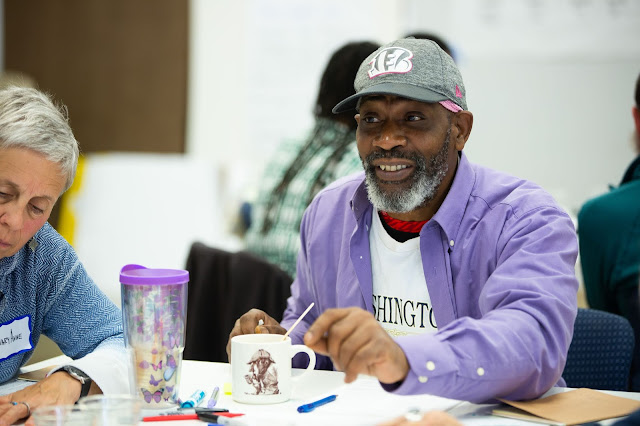Background
Behind This Project:
In 2018, Design Impact's office moved to Madisonville. We knew through casual conversation with our neighbors that there was concern about the changes in the neighborhood. Large, new buildings were being constructed on vacant lots, residents in certain parts of the neighborhood were being solicited by out of town real estate investors and renters were seeing unsustainable increases in rent.Residents were especially worried about the displacement of Black residents in their historically diverse community as new investment poured in. From our work in other neighborhoods in Cincinnati and across the country, we know this worry is not unfounded when we consider race and neighborhood development patterns in Cincinnati and around the country. The effects of discriminatory lending practices from decades ago linger still as whole communities of Black residents were denied the opportunity to buy homes and build wealth for themselves and future generations.
In the past, we used community-engaged design to help organizations and community groups include more residents to decide the vision and future of their neighborhoods. We listened to the community and did our best to share those voices, ideas, and truths with decision-makers. Community-engaged design brings people together to design new solutions, but we’ve learned that listening and co-creation around a specific problem are not enough. Racial and economic disparities still keep us separate.
But we hypothesized that when neighbors are more organized, invested in each other, and care deeply about one another, their community is more resilient in the face of dramatic neighborhood change.
We wanted to explore a new process focused on neighborhood-centered action that started with two critical elements: building deep, authentic relationships across race and naming how racism operates within us and in our communities. Only then, from this place of truth, can we actually imagine the kind of systemic and structural change needed to create equitable neighborhoods.
Where did we start?
We are applying community-engaged design through a racial equity lens to learn how community members of different races are affected by community development...and how deeper relationships with our neighbors can make us more resilient to change. This process always begins by deeply listening.- We asked dozens of Madisonville community members: how are you affected by the changes in the neighborhood?
- We shared major themes from our interviews with part of the community and discovered which themes they thought we could work with them to focus on.
- We turned these themes into two big questions we wanted to answer.
How might we ensure that Madisonville’s black residents have power, influence, and representation regarding development decisions?
The Studio
- We invited 7 of our interviewees - residents, community workers, and business owners - to help us put together a studio, or series of workshops, to explore our questions.
- We identified 20 Madisonville stakeholders who wanted to have an open and honest dialogue about race and who wanted to build deeper relationships with their neighbors.
- We have been working with these individuals for four months, facilitating a community-engaged design process with a racial equity lens.
- These individuals have established relationships and are organizing around three ideas they are testing in Madisonville that will lead to a more inclusive community.


